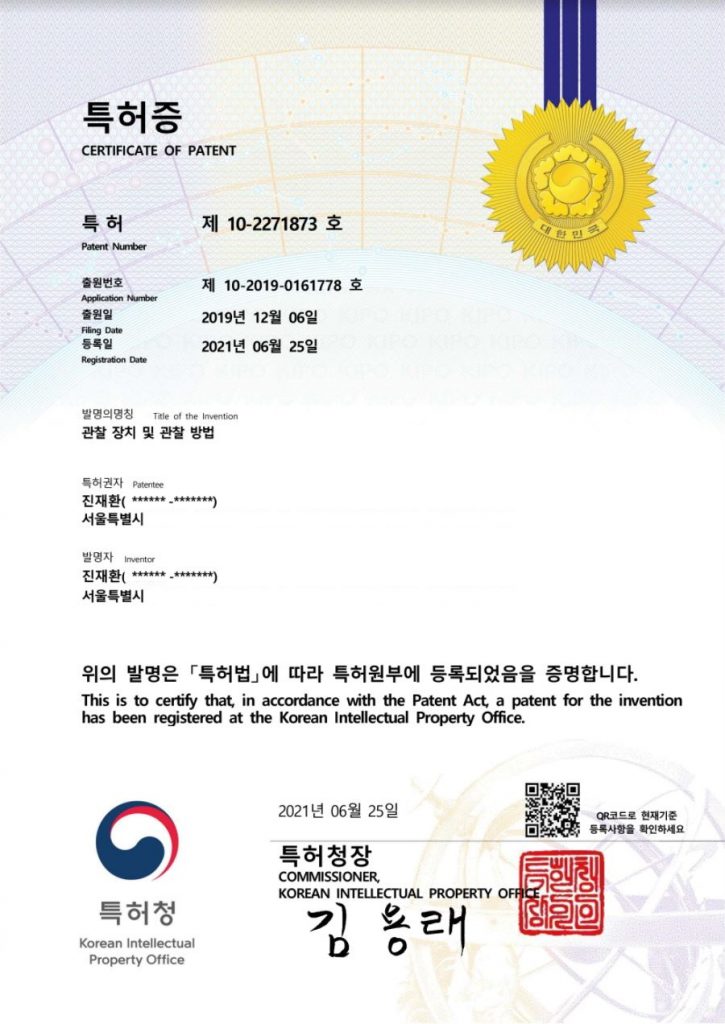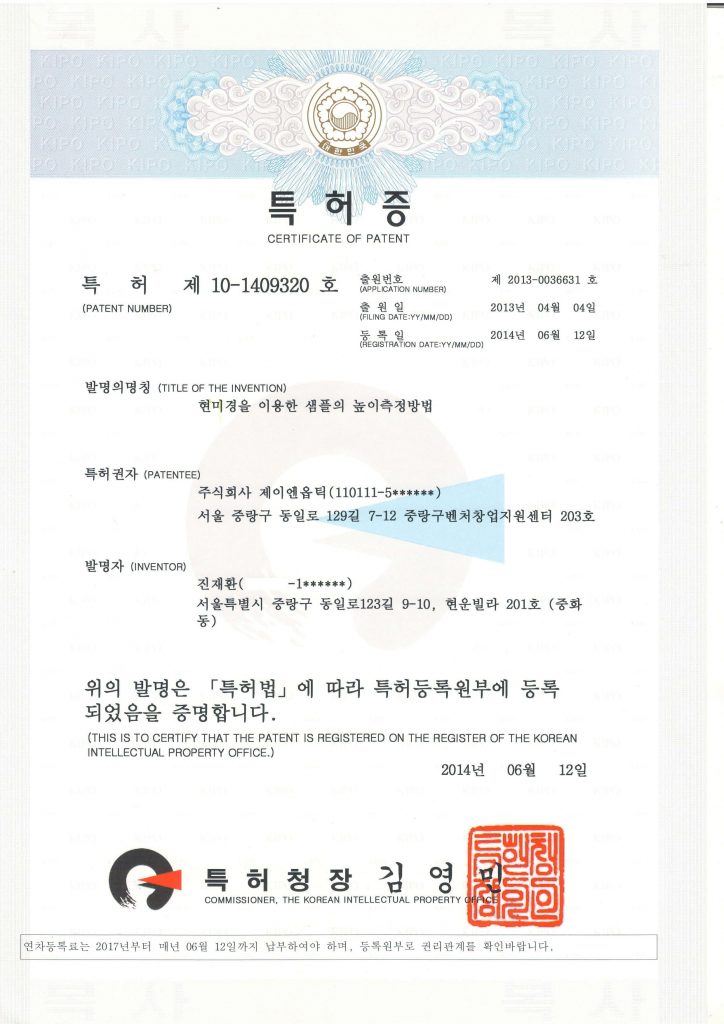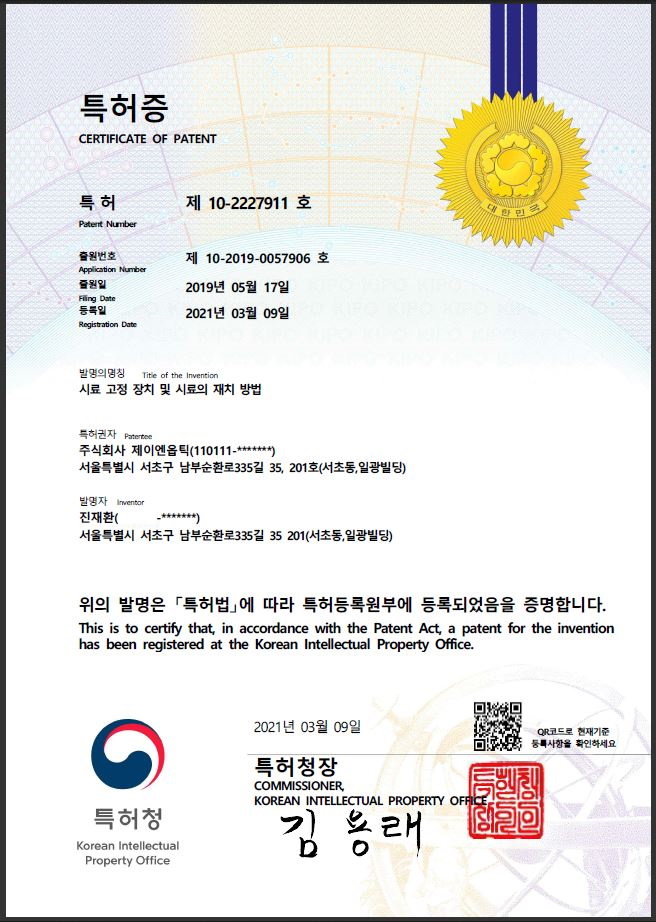Profile of Jin Jae-Hwan ( Instructor )
CEO of JNOPTIC co., ltd
2000년 06월05일 ~ 06월15일 ( OLYMPUS Japan in Tokyo)
Basic Knowledge of Microscope and Repair Training Course
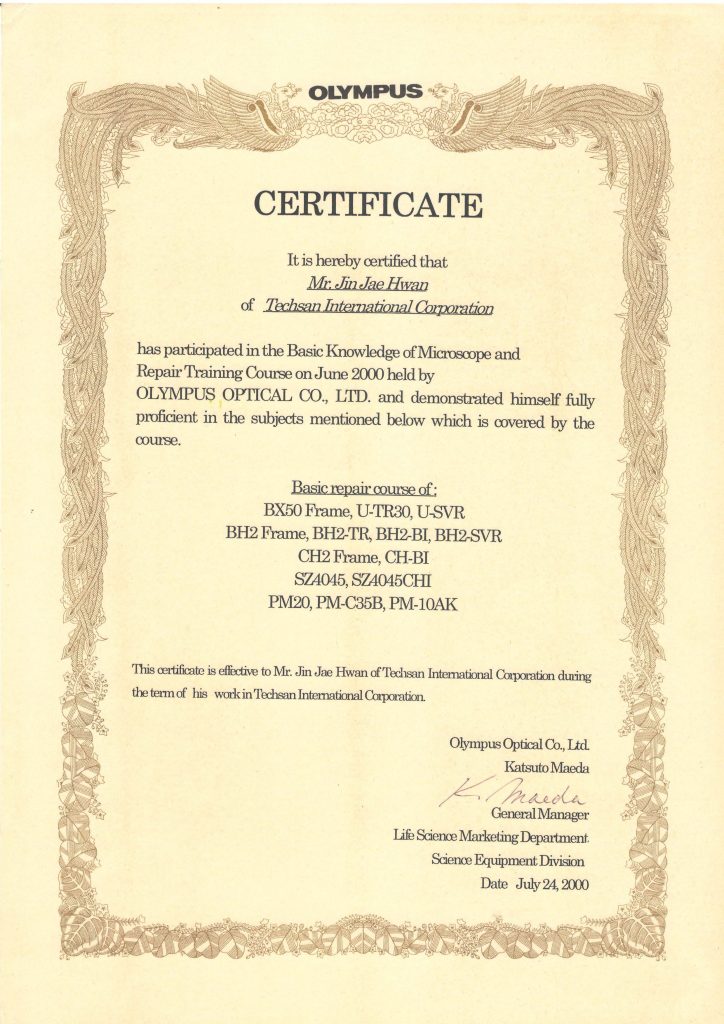
2001년12월04일 ( OLYMPUS Japan in Tokyo)
Measuring Microscope Calibration License
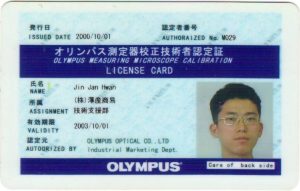
Main Model: STM6
License ID Number: M029
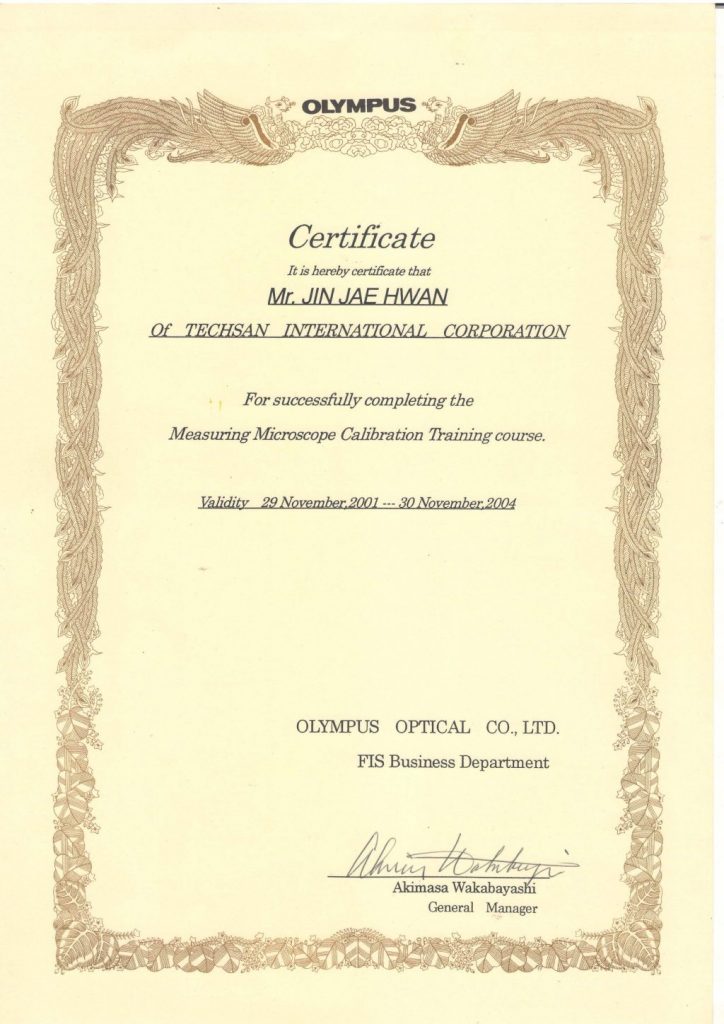
2003년09월04일 ( OLYMPUS Japan in Tokyo)
Biological Confocal Microscope Setup & Service Training
Main Model: FluoView300 & FluoView500
2003년10월03일 ( OLYMPUS Japan in Tokyo)
Inverted Microscope & Research Stereo Microscope Service Training
Main Model: IX71 / SZX9
2004년08월17일 ~ 8월20일 ( OLYMPUS Japan in Tokyo)
Confocal Microscope Setup & Service Training
Main Model: FV1000
2004년 10월11 ~ 10월13일 ( OLYMPUS Japan in Tokyo)
Confocal Microscope Setup & Service Training
Main Model: FV1000 M-COMB(Multi Combiner)
2005년06월20일 ~ 06월23일 ( OLYMPUS Japan in Tokyo)
Research System Microscope Service Training
Main Model: AX70
2005년08월01일~08월02일 ( OLYMPUS Japan in Tokyo)
Polarizing Microscope Instruction Training
Main Model: BX51P
2005년12월19일 ~ 19일 ( OLYMPUS Japan in Tokyo)
ZDC Training for Maintenance & Basic Knowledge of Confocal Microscope
2005년12월20일 ~ 22일 ( OLYMPUS Japan in Tokyo)
현미경의 성능을 끌어내는 Brushup Course (GA Academy)
2006년08월02일 ~ 08월04일 ( OLYMPUS Japan in Tokyo)
Confocal Laser Scanning Microscope for Industrial Market
D class License(for ols3000)
Main Model: OLS 3000(Lext)
2006년10월11일 ~ 10월15일 ( OLYMPUS Japan in Tokyo)
Confocal Laser Scanning Microscope Training for Bio Maket
Maintenance Service Training
Main Mode : M-COMB(Multi Combiner for FV1000)
2006년12월09일 IX Repair 교육
2007년05월07일 ~ 05월11일 ( OLYMPUS Japan in Tokyo)
Modify Training for Zero-Drift Compensation Unit of IX81
IX2-Customizing Training (Optic Port Modify)
Main Model: IX71 & IX81-ZDC
2007년09월03일 ~ 09월08일 ( OLYMPUS Japan in Tokyo)
Leicense D class Trainging
Main Model: OLYMPUS Bio Confocal Microscope FV1000
2008년04월08일 ~ 04월10일 ( OLYMPUS Japan in INA_Nagano )
IV100 Setup Training
(in vivo fluorescence molecular imaging systems)
2008년07월22일 ~ 07월23일 ( Narishige Group in Tokyo, Japan )
Narishige Maintenance Training
2008년07월24일 ~ 07월28일 ( OLYMPUS Japan in Tokyo)
Research Inverted Microscope maintenance Training
Main Model: IX81
2009년05월18일 ~ 5월22일 ( OLYMPUS Japan in Tokyo)
OLYMPUS Bio Confocal Microscope License Training
License Grade: FV1000 C class
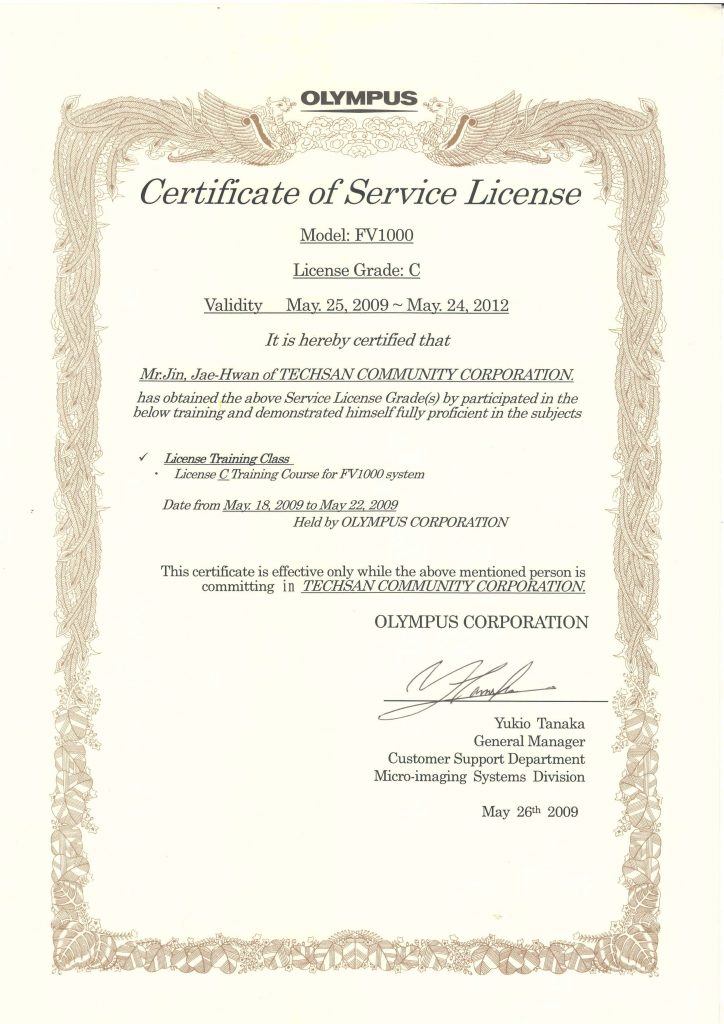
2009년06월23일 ~ 06월26일 ( OLYMPUS Japan in Tokyo)
Confocal Laser Scanning Microscope License Training
License Grade: FV10i C class
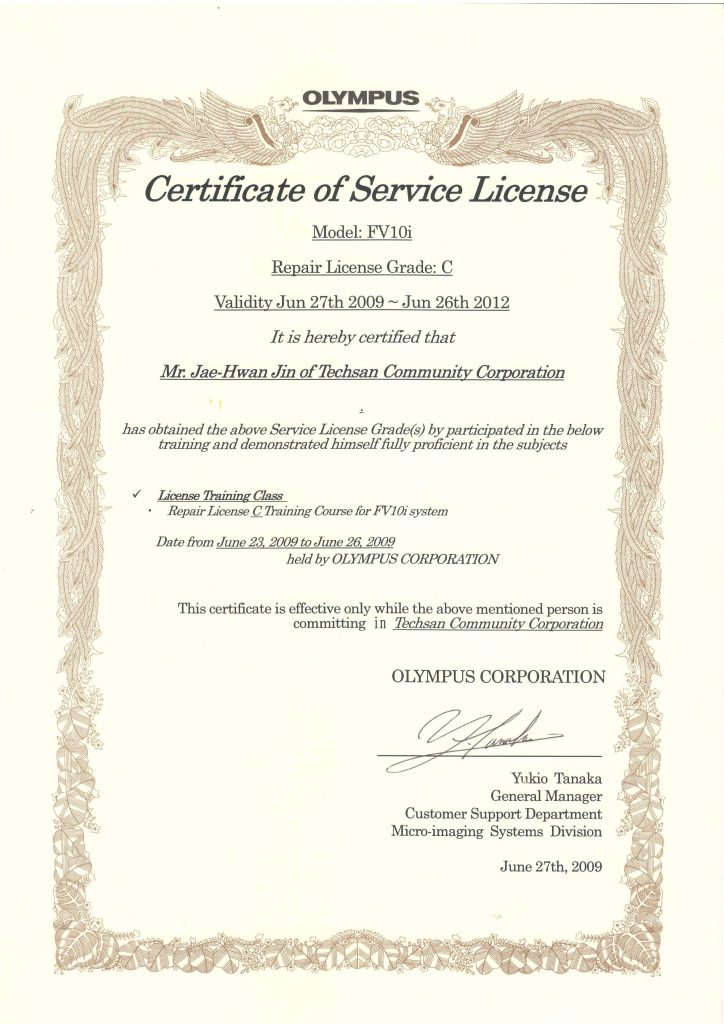
2009년 10월19일 ~ 10월23일 ( OLYMPUS Japan in Tokyo )
Multi Photon Laser Scanning MICROSCOPE Setup Training
Main Model: MPE C class
2010년08월03일 ~ 08월08일 ( OLYMPUS Japan in Tokyo )
Modify Training for Zero-Drift Compensation Unit of IX81
Main Model: IX81-ZDC2
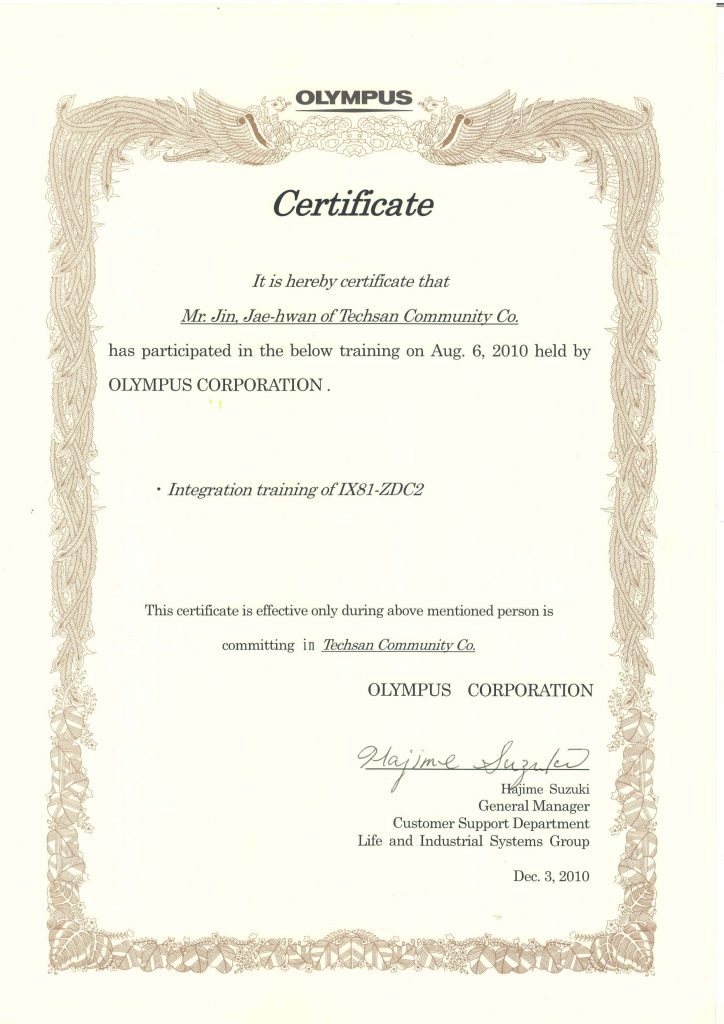
2011년 04월18일
Start a Business – JNOpTIC co., LTD
2013년 04월4일
특허 출원: 현미경을 이용한 샘플의 높이 측정 방법
2014년 06월12일
특허 등록 ( 샘플의 높이 측정시 오차 보정 방법)
응용분야 : 현미경을 이용한 높이 측정
2021년 03월09일
특허등록 ( 현미경 샘플의 재치 방법을 통한 단면관찰 )
응용분야 : 연포장 샘플의 단면관찰, 모발의 단면 관찰, 그 외 각종 단면 관찰
2021년 06월25일
특허등록 ( 현미경 관찰법 – 동시 관찰법 )
응용분야 : 형광 관찰법과 명시야 관찰법의 동시 관찰이 가능하게 하여 빠른 수율 획득 가능
보유 라이센스 및 지식재산





